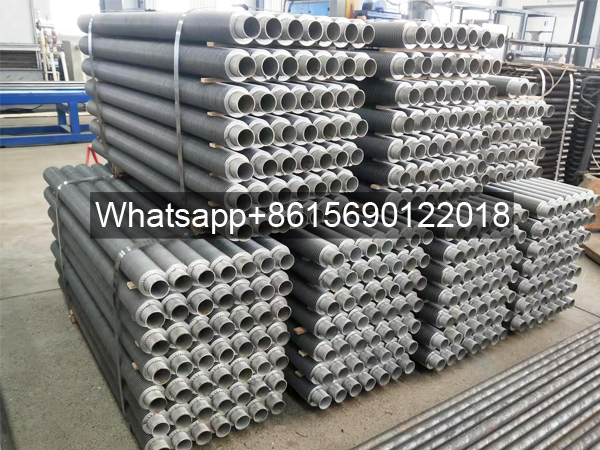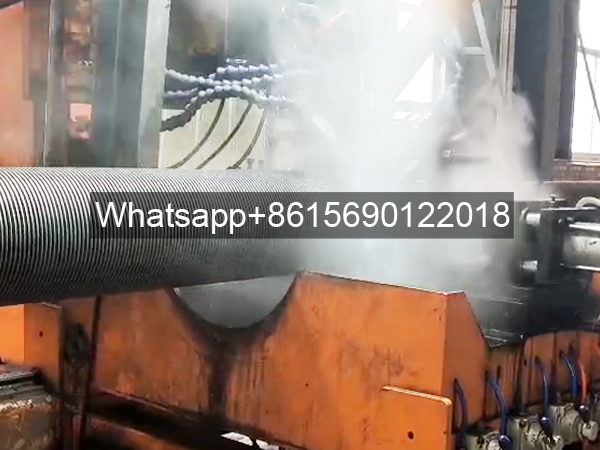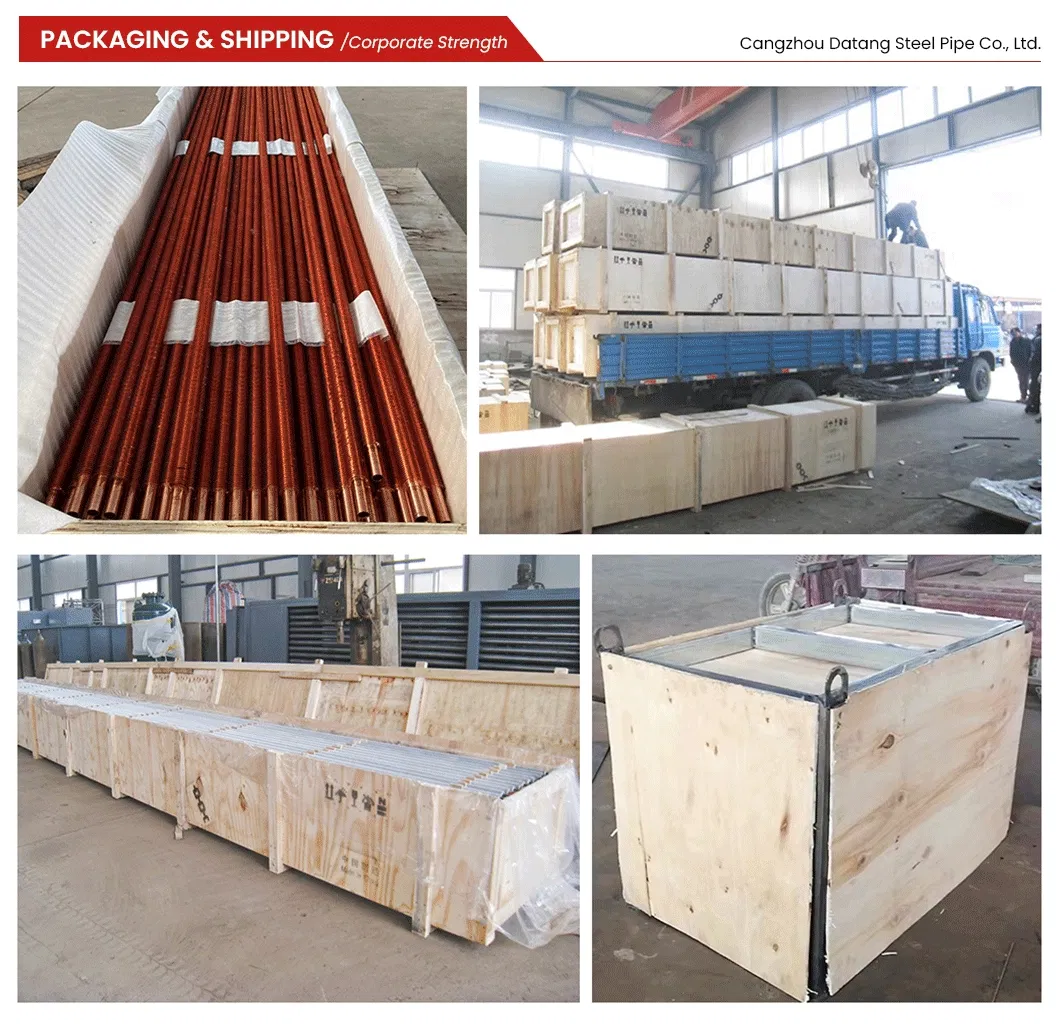What are High Frequency Welding Finned Tubes?
High Frequency Welded Finned Tubes are a type of spiral finned tube.

High Frequency Welded Fins are spiral finned tubes manufactured using high-frequency current welding technology. They are metal components designed to enhance heat transfer on the surface of heat exchange tubes. They utilize the skin effect and proximity effect of high-frequency current to heat the steel strip and steel tube to a plastic state, then pressurize and weld them together, creating a one-piece structure with a weldability of up to 95%. Based on the current input method, they are categorized into high-frequency resistance welding (HFRI) and high-frequency induction welding (HFIN). The HFRI is suitable for large-diameter pipes, while the HFIN is primarily used for small-diameter, thin-walled pipes.
This product is used in industries such as greenhouse heating, petrochemicals, power plant drying equipment, waste heat recovery, and printing and dyeing.
HFW fins utilize the solid-phase welding principle, resulting in a small heat-affected zone and stable weld performance. The fins have low contact thermal resistance with the base tube, are corrosion-resistant, wear-resistant, and highly resistant to dust accumulation, and offer a heat transfer area several to dozens of times greater than that of bare tubes. The base tube can be made of stainless steel, ND steel, or ordinary carbon steel. The welding process undergoes eddy current, ultrasonic, and water pressure testing, resulting in a heat transfer efficiency 4-7 times higher than that of ordinary pipes.
Finned tubes are typically designed to improve heat transfer efficiency by adding fins to the surface of the tube to increase its external (or internal) surface area.

High-Frequency Welded Spiral Finned Tube Product Overview
High-Frequency Welded Spiral Finned Tubes utilize the skin effect and proximity effect of high-frequency current as a steel strip is wrapped around the steel tube, heating the strip and the outer surface of the tube until they become plastic or melt. The weld is then completed under the pressure of the wrapped strip. This high-frequency welding is a solid-phase welding method. Compared to methods such as inlay welding, brazing (or overall hot-dip galvanizing), it offers superior product quality (the fin weldability is high, reaching 95%), productivity, and automation.
High-Frequency Welding (HFW) uses solid-state resistance heat as its energy source. During welding, high-frequency current generates resistance heat within the workpiece, heating the surface of the weld zone to a molten or nearly plastic state. Upsetting force is then applied (or not) to achieve metal bonding. Therefore, it is a solid-phase resistance welding method.
High-frequency welding can be divided into contact high-frequency welding and induction high-frequency welding based on how the high-frequency current generates heat within the workpiece. In contact high-frequency welding, the high-frequency current is introduced into the workpiece through mechanical contact. In induction high-frequency welding, the high-frequency current is coupled to an induction coil outside the workpiece, generating an induced current within the workpiece.
High-frequency welding is a highly specialized welding method requiring specialized equipment tailored to the product. It offers high productivity, with welding speeds reaching 30 m/min. It is primarily used for welding longitudinal or spiral seams in pipe manufacturing.

The two main effects of high-frequency current in high-frequency welding are:
Skin effect—a physical phenomenon in which, when an alternating current flows through a conductor, the current distribution across the conductor’s cross-section becomes uneven, with the current density increasing gradually from the center to the surface, with the majority of the current flowing only along the conductor’s surface. The lower the conductor’s resistivity, the greater its magnetic permeability, and the higher the current frequency, the more pronounced its skin effect.
The proximity effect is a unique physical phenomenon in which, when high-frequency current flows in opposite directions between two conductors or in a reciprocating conductor, the current concentrates on the adjacent side of the conductor.
The current frequency range commonly used in high-frequency welding is 300-450 kHz, although frequencies as low as 10 kHz are sometimes used.
Features of High-Frequency Welding Fins
1. Due to the high welding speed and strong self-cooling of the weldment, the heat-affected zone is small and oxidation is less likely to occur, resulting in excellent weld microstructure and performance.
2. Corrosion resistance, wear resistance, low contact thermal resistance, high stability, and dust accumulation resistance.
3. Large heat exchange area.
Types of High-Frequency Welding
High-frequency welding is divided into high-frequency resistance welding and high-frequency induction welding.
① High-frequency resistance welding: Using rollers or contactors as electrodes, high-frequency current is introduced into the workpiece. This method is suitable for continuous longitudinal butt welding and spiral lap welding of pipes, as well as welding boiler finned tubes and heat exchanger spiral fins. It can weld pipes with an outer diameter of 1200 mm and a wall thickness of 16 mm, and weld I-beams with a web thickness of 9.5 mm, offering high productivity.
② High-frequency induction welding: Using an induction coil to heat the workpiece, it can weld small-diameter pipes with an outer diameter of 9 mm and thin-walled pipes with a wall thickness of 1 mm. It is commonly used for longitudinal seam welding of small and medium-diameter steel and brass pipes, and can also be used for circumferential seam welding, but the power loss is greater than that of high-frequency resistance welding.
The main parameters affecting high-frequency welding quality are the frequency and power of the high-frequency power supply, the workpiece forming angle, the extrusion force, the distance between the electrode (or induction coil) and the extrusion rollers, and the welding speed. The main equipment includes the high-frequency power supply, the workpiece forming equipment, and the extrusion mechanism.
High-frequency welding offers stable quality, high productivity, and low cost. Suitable for high-efficiency automated production lines, it is an advanced method for producing seamed pipes.

